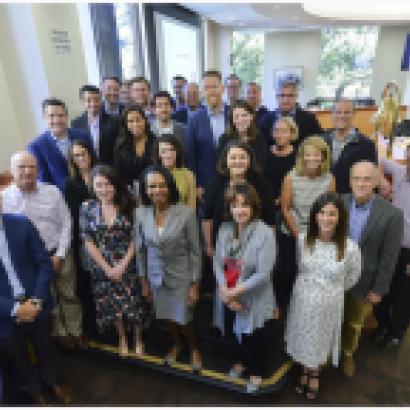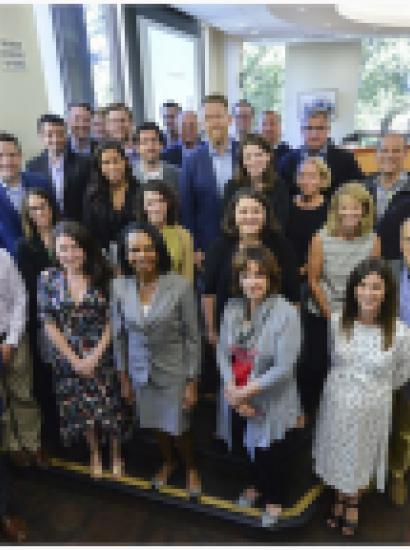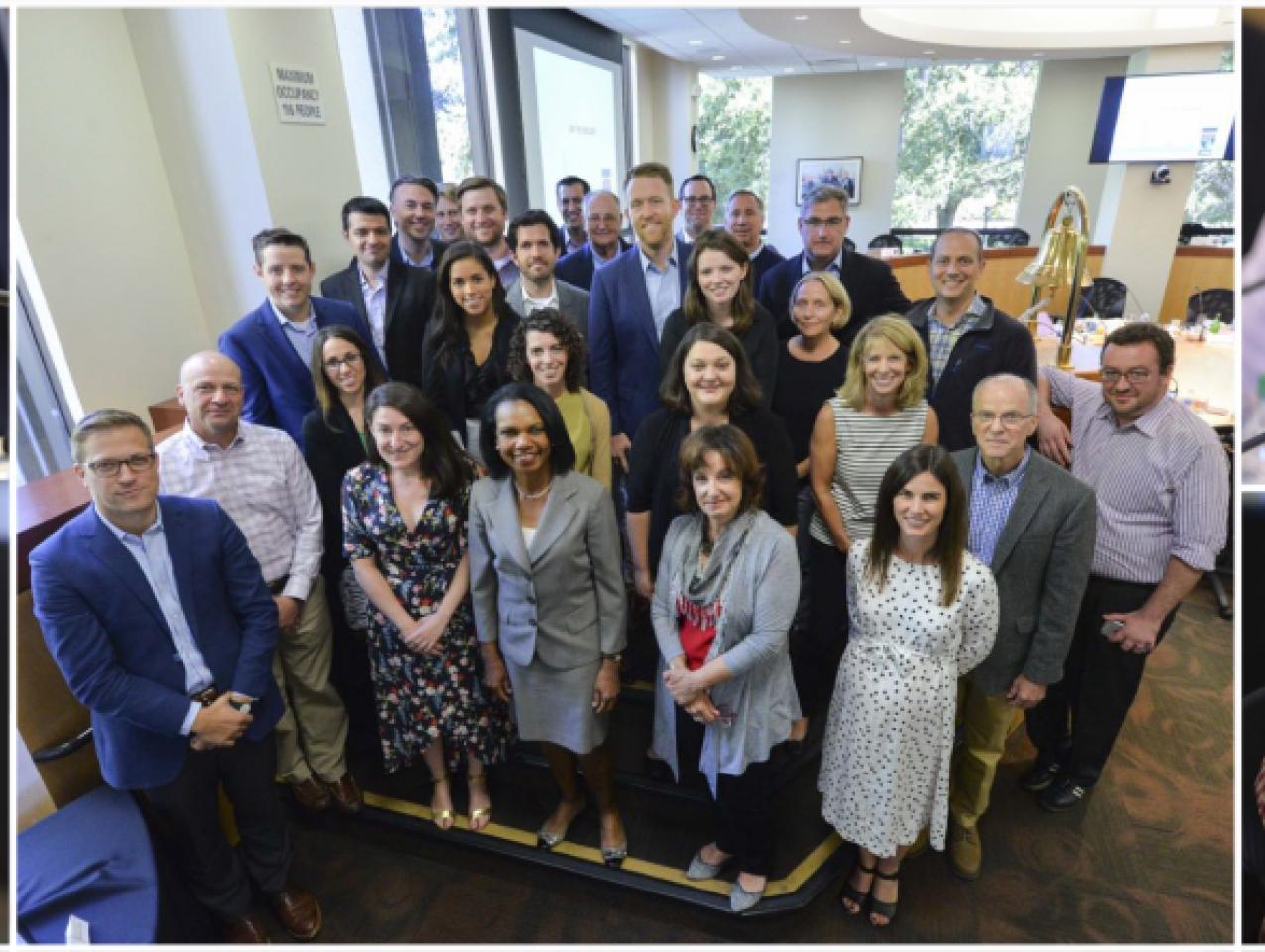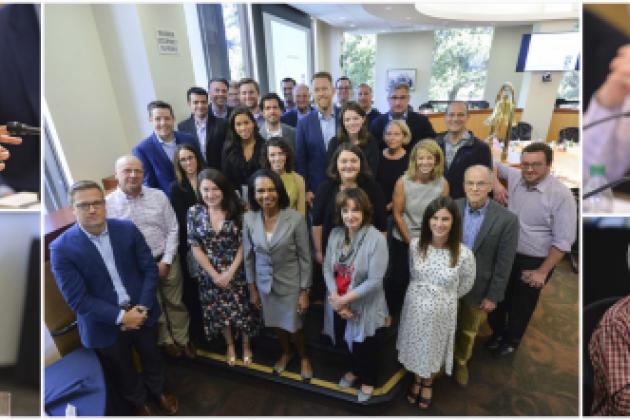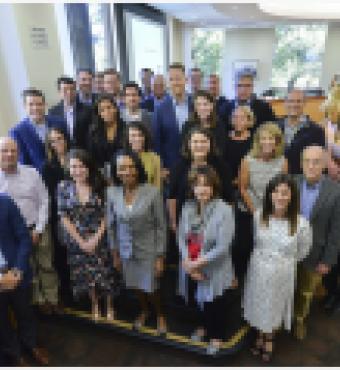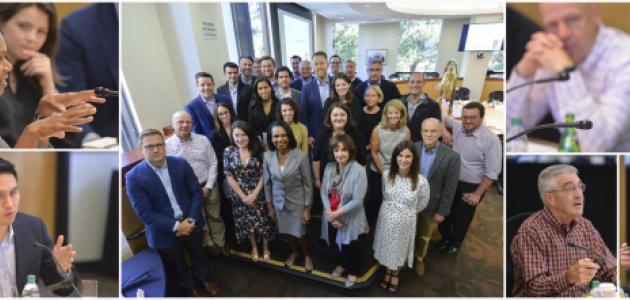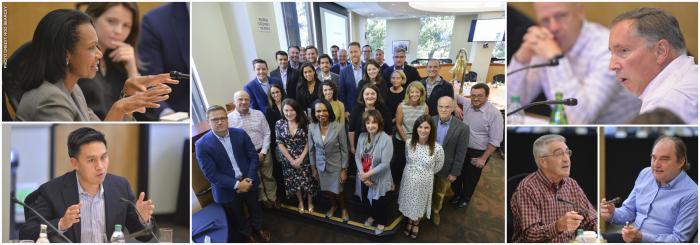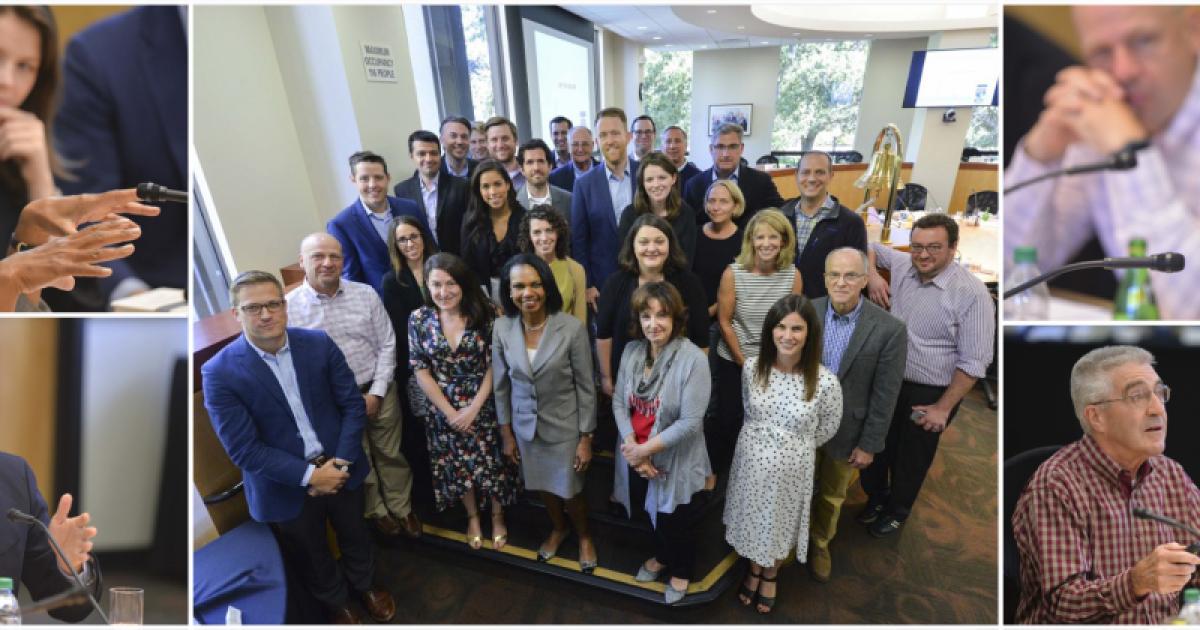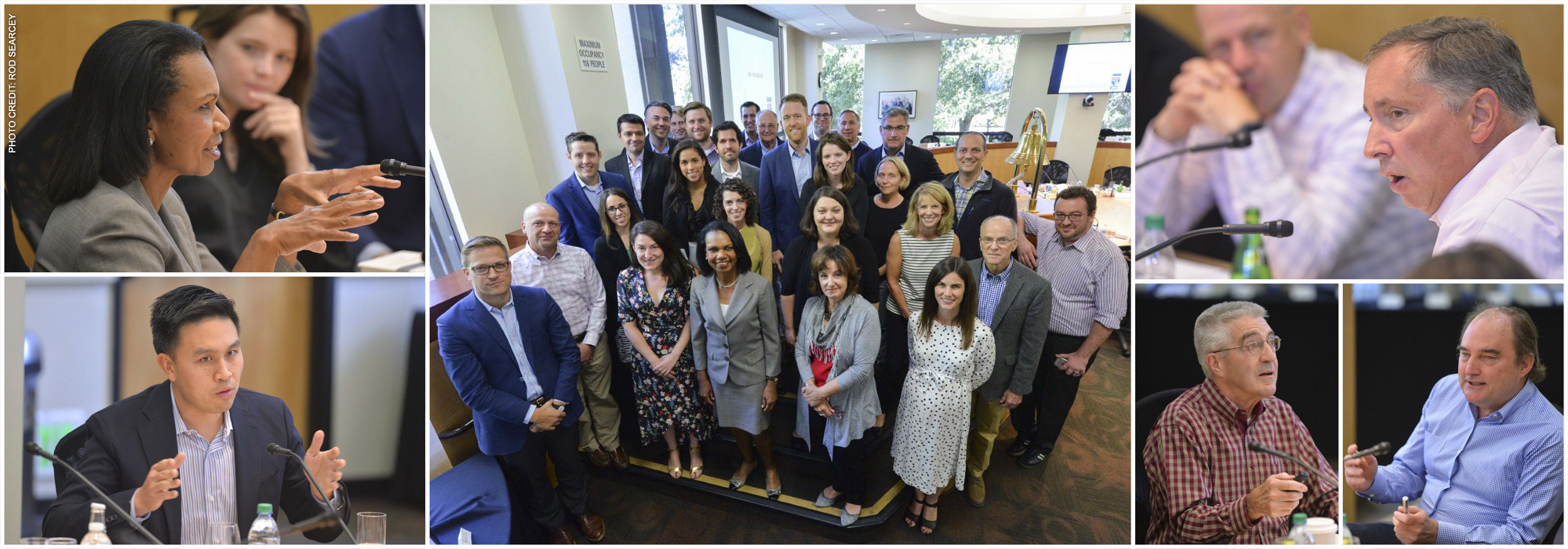
The Hoover Institution’s media roundtable on Monday featured some of its top political experts just as the 2018 midterm elections heat up.
The discussion, “Outside the Beltway,” came fifty days before the November 6 elections that may determine which party controls Congress. Subjects discussed included political polarization, polling, the Democrats’ chances of taking over the House, election analyses, foreign and domestic policy, California politics, and the 2020 campaign.
The event drew twenty-five members of the national media from a variety of print and broadcast outlets, including, the New York Times, Wall Street Journal, Associated Press, Washington Post, Washington Examiner, Los Angeles Times, Politico, ABC, CBS, NBC, and CNN.
Hoover speakers included Condoleezza Rice, Morris Fiorina, Doug Rivers, David Brady, Bill Whalen, and Lanhee Chen.
Polarization
In his remarks, Fiorina discussed “party sorting,” and how while the overall distribution of public opinion has not changed, specific dimensions of it have become more highly correlated with partisanship.
What reinforces the difficulty of working together is the close party balance, because neither party enjoys majority support, he noted.
Also, partisanship is strongest among the “political class”— party elites and activists, Fiorina said. Those are the people on cable TV shows debating politics and driving media narratives.
But most Americans are working, raising their families, and otherwise going about their daily lives—not attending political rallies or paying much attention to the battles being fought by political elites, he added. Today, many ordinary voters, especially the younger generations, consider the major party system too ideological.
“We have an old party system,” Fiorina, noting that an opportunity may exist for a third party, except that Donald Trump basically filled that need in the 2016 election as both party elites did not support him; but in the end, he had support of enough rank-and-file voters to win the election.
Polling
Rivers described the current state of polling and how it’s changed through the years—for example, in this age of cellphones, telephone surveys are much more difficult in terms of response rates than when only landline phones existed.
The 2016 election, when Trump won the electoral college while Hillary Clinton prevailed in the popular vote, raised many questions about forecast polling, he acknowledged. “There were a lot of state-level misses.”
Voter turnout is a critical factor in election results and a reason why some pre-election polls may miss the mark, he added. For example, some people who tell a phone surveyor they are likely to vote may not do so on election day. “Turnout modeling is more difficult and important for accurate predictions.”
Rivers also pointed out that the national popular vote—measured best by the generic ballot—is quite different than the ultimate electoral college votes.
But state and congressional polling is much harder because it is afflicted with smaller sample sizes, poor population estimates, unreliable party identification distribution, and inaccurate turnout forecasting, according to Rivers.
Also, he added, “The bad news is that national polling is nearly useless for midterms.”
Party identification
Brady said the growth of independents since the 1980s is defining contemporary voting, while the Democratic and Republican parties have become more liberal and conservative, respectively. One might call this “party parity,” he said.
“This has a number of consequences,” Brady said, noting such a trend produces more flip-flopping where party controls the government, and as a result, creates more political instability. Also, it makes to harder for a national candidate to bring together the middle with either of the political extremes.
“It’s not possible to be a unifier at this point, given the partisan differences that exist,” he said.
Brady said the classical sense of the Republican Party has changed under Trump, as many of his voters support higher taxes on the wealthy, which would have been anathema in the GOP only a few years ago. Meanwhile, a battle exists in the Democratic Party between the Bernie Sanders, or progressive wing and the more establishmentarian wing.
Like Rivers, he said, “The single most difficult thing is to determine who will vote.” While he does not see a big “wave” election for Democrats, he says it’s likely that party takes the House of Representatives if they get a good turnout.
As for the Senate, the Democrats’ odds of winning seven of nine elections are not high, he noted.
California dreaming
“Fortress Blue” was how Whalen described current California politics and its strong Democratic voting patterns. About twenty years ago, the state was reasonably competitive for both parties, but that is no longer the case. Even once proud GOP areas like Orange County and other Southern California locales are tilting leftward.
Since 1992, California is one of the fifteen most reliable Democratic states, and today the depth of anti-Trumpism is a constant theme throughout the state, he added.
“Hardly a day goes by when something that Donald Trump says or does doesn’t ricochet across this state,” Whalen said.
Meanwhile, the Hillary-Bernie rift in the Democratic party is growing, he said. Senator Dianne Feinstein, a moderate or traditional Democrat, faces a threat from her left by Kevin de León.
“Republicans have a lot of problems here,” Whalen said, noting how the California GOP too often runs first-time candidates who lose.
“Republicans have to get in the business of building a bench,” and they need to adapt to today’s society and not fight losing battles on issues like same sex marriage, he said.
Policy issues
Chen said, “I like to think of this as a ‘something’s got to give’ election.” A good economy and high voter enthusiasm are two factors converging in the midterms. In the upcoming election, issues like health care may animate voters, he said.
“This is the issue that they [Democratic voters] identify as their top issue,” said Chen, adding that Republicans report jobs and economy as their greatest concerns.
Single payer health care will be a “litmus test” for Democrats, he said, while tariffs and a potential trade war with China and its impact on the economy will be a similar theme in Republican circles.
As for Trump, “whether he’s an asset or not depends on what race you’re in,” Chen said.
MEDIA CONTACTS:
Clifton B. Parker, the Hoover Institution: 650-498-5204, cbparker@stanford.edu







